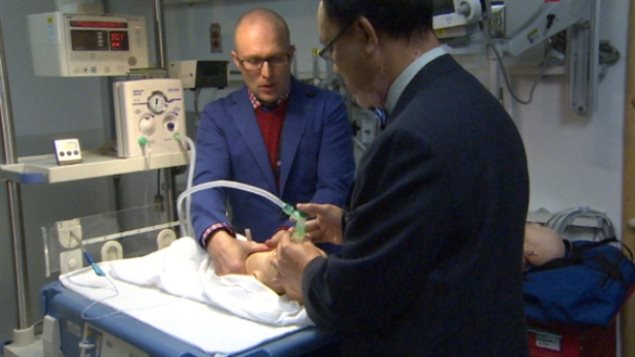A new way to revive preterm-babies in distress was successfully used on eight infants in western Canada and that may change standard procedures in future. Further study is needed first.
About 10 per cent of babies born in the province of Alberta are premature and one out of ten will need chest compressions to establish a regular heartbeat, says Georg Schmolzer, a lead researcher in this study and assistant professor at the University of Alberta.
Currently babies are resuscitated with three chest compressions, followed by a breath—a pattern that must be repeated and can be difficult to synchronize.
‘Important outcomes’ with new method

The new method involves continuous chest compression while a second health care professional holds an oxygen supply to the baby’s face. A study of eight babies using this method showed “successful results of better survival, less need of oxygen, less need of medications to kick start the heart, as well as shorter duration of chest compressions, which are all very important outcomes,” says Schmolzer.
Babies administered the standard method needed three minutes of chest compressions before their hearts beat properly on their own. The new methods showed results after just 30 seconds, says Schmolzer. One advantage of continual compressions was that the circulation of blood was continuous. That reduces the likelihood of injury to the body, especially the brain.
A much broader study will be done involving international researchers to confirm results and establish whether there is a quantifiable difference in the survival rates for newborns resuscitated the new way as opposed to the old.







For reasons beyond our control, and for an undetermined period of time, our comment section is now closed. However, our social networks remain open to your contributions.